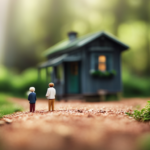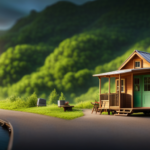Beginners Guides
How Expensive Is It To Build A Tiny House
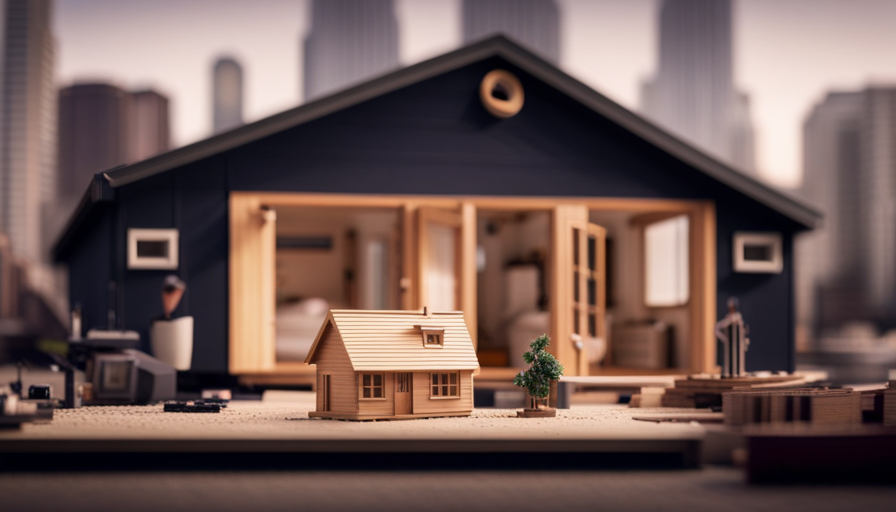
Have you ever imagined making your life simpler and residing in a snug, minimalist environment? The tiny house movement could be precisely what you need. However, before jumping into this distinctive way of living, it’s crucial to think about the financial aspects.
How expensive is it to build a tiny house? The answer to that question is not as straightforward as you might think. There are various factors that can significantly impact the cost, including the type of tiny house you choose, the materials used, labor costs, location considerations, design and customization options, and the timeframe for construction.
In this article, we will delve into each of these aspects and provide you with a comprehensive understanding of the expenses involved in building a tiny house. So, if you’re ready to explore the world of tiny living and want to make an informed decision about your budget, keep reading!
Key Takeaways
- Factors impacting the cost of building a tiny house include the type of tiny house, materials used, labor costs, location, design, and construction timeframe.
- Different designs and construction methods for tiny houses have varying costs, such as traditional stick-built, prefabricated modules, and repurposed shipping containers.
- Using salvaged and reclaimed materials, as well as DIY furniture and fixtures, can help reduce costs while adding character to the tiny house.
- Regional differences in building costs, labor availability, and permit requirements can significantly impact the overall expense of constructing a tiny house.
Types of Tiny Houses
When it comes to building a tiny house, the cost can vary depending on the type of tiny house you choose to build. There are various designs and construction methods for tiny houses, each with its own set of advantages and disadvantages.
Some popular designs include the traditional gable roof, the shed roof, and the flat roof. Each design offers different aesthetic appeal and functionality.
Construction methods for tiny houses can range from traditional stick-built construction to using prefabricated modules or even repurposing shipping containers. Each method has its own cost implications and may require different skill sets.
The choice of tiny house design and construction method will ultimately impact the overall cost of the project. Some designs may require more materials and labor, while others may be more cost-effective. Additionally, factors such as the size of the tiny house, the level of customization, and the location of the build can also affect the cost.
Now, let’s delve into the next section about the cost of materials, which plays a significant role in determining the total expense of building a tiny house.
Cost of Materials
Using a pinch of creativity and resourcefulness, the overall price of constructing a tiny home can be significantly reduced. Here are three cost-saving tips and alternative materials that can help you build your dream tiny house without breaking the bank:
-
Salvaged and Reclaimed Materials: Instead of buying brand new materials, consider using salvaged and reclaimed materials for your tiny house. These materials can be found at salvage yards, construction sites, or even online marketplaces. Not only are they budget-friendly, but they also add character and charm to your tiny home.
-
DIY Furniture and Fixtures: Building your own furniture and fixtures can save you a substantial amount of money. Get your hands dirty and unleash your inner carpenter by crafting your own cabinets, tables, and shelves. There are plenty of online tutorials and resources available to guide you through the process.
-
Sustainable and Eco-Friendly Options: Opt for eco-friendly materials such as bamboo flooring, recycled glass countertops, or reclaimed wood siding. These materials not only contribute to a greener environment but also tend to be more cost-effective in the long run.
By implementing these cost-saving tips and exploring alternative materials, you can build your tiny house at a fraction of the cost compared to traditional construction methods. Now, let’s delve into the next section and discuss the labor costs involved in building a tiny house.
Labor Costs
To save even more money on your dream tiny home, you’ll be thrilled to discover the affordable labor costs involved in bringing your vision to life.
When it comes to constructing a tiny house, skilled workers are crucial in ensuring a high-quality build. Hiring experienced carpenters, electricians, and plumbers will guarantee that your tiny home is built to code and meets all safety regulations. While the cost of skilled labor can vary depending on your location, it’s generally more affordable than hiring contractors for larger traditional homes.
Labor costs for building a tiny house typically make up a significant portion of the overall construction expenses. However, due to the smaller size of a tiny house, the labor required is considerably less compared to a standard-sized home. This means that the overall labor costs for a tiny house are significantly lower. Additionally, since tiny houses are often built on trailers, the construction process is streamlined and can be completed more efficiently, further reducing labor expenses.
As we move on to the next section about ‘location considerations,’ it’s important to note that labor costs can also differ based on where you choose to build your tiny house. Factors such as local wages and availability of skilled workers can impact labor expenses.
Location Considerations
When considering the location for building a tiny house, there are several key points to take into account. Firstly, one must consider the land and zoning regulations in the desired area. This includes understanding the rules and restrictions around building a tiny house on a specific piece of land.
Secondly, utilities and off-grid options are important factors to consider. It’s necessary to determine if the location has access to necessary utilities such as water, electricity, and sewage, or if off-grid options are available.
Lastly, regional differences in building costs should be taken into consideration. The cost of building a tiny house can vary greatly depending on the region, so it’s important to research and understand the cost differences in different areas.
Land and Zoning Regulations
In order to avoid any potential legal hurdles, it’s important to familiarize yourself with local land and zoning regulations before diving into the process of building your tiny house.
One key consideration is land availability. You’ll need to identify if there are suitable parcels of land in your desired location that allow for tiny house construction.
Additionally, obtaining the necessary building permits is crucial. Different areas have different requirements, so it’s essential to research and understand the specific regulations in your area. This may involve submitting detailed plans, paying fees, and adhering to specific construction standards.
Understanding these regulations and obtaining the necessary permits will ensure that your tiny house project is compliant with local laws.
Moving forward, let’s now explore the next important aspect of building a tiny house: utilities and off-grid options.
Utilities and Off-Grid Options
When considering the cost of building a tiny house, it’s important to take into account not only the initial investment in the structure itself, but also the ongoing expenses associated with living in it.
One major factor to consider is utilities and off-grid options. Many tiny house owners choose to embrace off-grid living, meaning they are not connected to traditional utility systems. This allows for greater self-sufficiency and a reduced carbon footprint.
One popular off-grid option is solar power, which can provide electricity for lighting, appliances, and heating or cooling systems. While the upfront cost of installing solar panels may be higher, it can result in significant savings in the long run.
Transitioning to the next topic, it’s worth noting that regional differences in building costs can also impact the overall expense of constructing a tiny house.
Regional Differences in Building Costs
Regional disparities in construction expenses can significantly impact the overall investment required for erecting a compact abode. When considering the affordability of building a tiny house, it’s essential to take into account the regional variations in construction costs.
Certain areas may have higher labor and material expenses, while others may offer more affordable options. Additionally, the cost of obtaining construction permits can vary greatly from one region to another. Some areas may have strict regulations and expensive permit fees, while others may have more lenient requirements and lower costs.
These regional differences can greatly affect the overall expense of building a tiny house.
Transitioning into the subsequent section about ‘design and customization,’ it’s important to understand how these regional disparities can impact the choices and options available for personalizing a compact dwelling.
Design and Customization
Imagine the endless possibilities of designing and customizing your very own tiny house, tailored specifically to your unique tastes and needs. When it comes to tiny house designs, the options are truly limitless. Whether you prefer a modern, minimalist aesthetic or a cozy, rustic feel, there are countless design styles to choose from.
Additionally, customization options allow you to maximize the functionality of your tiny house. You can incorporate space-saving features like built-in storage, multipurpose furniture, and innovative layouts to make the most of every square inch. Furthermore, you can personalize your tiny house with unique finishes, colors, and materials to reflect your personality and create a space that feels like home.
One of the advantages of building a tiny house is the ability to customize it according to your preferences and needs. By carefully considering your lifestyle and priorities, you can design a space that meets all your requirements. Whether you need a dedicated workspace, a spacious kitchen, or a cozy sleeping loft, you can create a floor plan that suits your specific needs.
Additionally, customizing a tiny house allows you to incorporate eco-friendly features and energy-efficient systems, reducing your environmental impact and saving on long-term costs.
As you consider the design and customization options for your tiny house, it’s important to keep in mind your budget and financing options. By carefully planning and budgeting for your project, you can ensure that you make informed decisions and avoid overspending.
Financing and Budgeting
To successfully finance and budget your dream of owning a customized tiny house, you’ll need to carefully consider your financial situation and prioritize your spending.
One of the first steps is to explore different financing options available for tiny house construction. Traditional bank loans are an option, but they may require a larger down payment and have stricter requirements. Alternatively, you could consider personal loans or crowdfunding platforms specifically designed for tiny house projects. These options might offer more flexibility and a quicker approval process.
In addition to financing, there are several cost-saving measures you can take to make building a tiny house more affordable. For instance, purchasing used or salvaged materials can significantly reduce expenses while still maintaining quality. Another approach is to consider alternative energy sources like solar panels, which can save you money in the long run by reducing or eliminating utility bills. Additionally, you can explore DIY options for certain aspects of the construction, such as insulation or interior finishes, which can help cut down on labor costs.
By carefully evaluating your financial options and implementing cost-saving measures, you can ensure that your tiny house project stays within your budget.
With the financing and budgeting aspects in place, the next section will focus on the timeframe for construction, providing insights into the different stages and estimated durations.
Timeframe for Construction
Transitioning from the previous subtopic of financing and budgeting, let’s now delve into the timeframe for constructing a tiny house. The construction process of a tiny house can be a complex and time-consuming endeavor, presenting its own set of challenges.
When it comes to building a tiny house, several factors can influence the timeframe. Here are four key considerations:
-
Design and Planning: The initial stage involves designing and planning the layout, which can take a significant amount of time. This includes determining the size, materials, and layout of the tiny house.
-
Permits and Regulations: Obtaining the necessary permits and navigating local regulations can be a lengthy process. It’s crucial to adhere to building codes and zoning laws, which may vary from one location to another.
-
Construction: The actual construction process can take several weeks to months, depending on the complexity of the design and the availability of skilled labor and materials.
-
Unforeseen Challenges: Unexpected issues, such as inclement weather or supply chain disruptions, can further extend the construction timeframe.
Considering these timeframe challenges in the construction process, it’s important to carefully plan and allocate sufficient time for each stage.
Moving forward, let’s explore some considerations for living in a tiny house.
Considerations for Living in a Tiny House
Living in a compact and efficient space can provide you with a unique and liberating lifestyle, where every corner of your home serves a purpose and encourages intentional living. When considering living in a tiny house, there are several important factors to take into account.
Firstly, the limited living space requires a minimalist approach to belongings. You will need to carefully consider what items are essential and prioritize functionality over excess. This can be a transformative experience, as it forces you to evaluate your relationship with material possessions and embrace a simpler lifestyle.
Furthermore, living in a tiny house requires careful design and organization to maximize the use of space. Utilizing multifunctional furniture and clever storage solutions is essential to make the most of your limited square footage. Additionally, maintaining a tidy living environment is crucial to prevent clutter from accumulating and making the space feel cramped.
Living in a tiny house can also provide financial benefits. With a smaller living space, utility bills are typically lower, and maintenance costs are often reduced. However, it’s important to carefully consider the initial cost of building a tiny house and weigh it against the potential long-term savings.
Transitioning into the subsequent section about the return on investment, it’s important to evaluate the financial implications of building and living in a tiny house.
Return on Investment
Maximizing your return on investment for a tiny house is like finding a hidden treasure chest full of gold coins – it requires careful planning and consideration of factors such as location, size, and materials used.
When it comes to return on investment, a tiny house can offer significant benefits. Firstly, the cost of building a tiny house is typically much lower than that of a traditional home, allowing for a higher return on investment. Additionally, the sustainability benefits of a tiny house can attract environmentally conscious buyers, further increasing its value.
Location plays a crucial role in determining the return on investment for a tiny house. Choosing a desirable location with good access to amenities and a strong housing market can significantly enhance the value of the property. Additionally, considering the size of the tiny house is important. While a smaller footprint may be more cost-effective, it is essential to strike a balance between space and functionality to appeal to potential buyers.
The materials used in constructing a tiny house also impact its return on investment. Opting for high-quality, durable materials can increase the longevity and value of the house. Furthermore, incorporating sustainable features like solar panels and energy-efficient appliances can attract buyers looking for eco-friendly options, thereby enhancing the return on investment.
Maximizing the return on investment for a tiny house requires careful consideration of factors such as location, size, and materials used. By strategically planning and incorporating sustainable features, a tiny house can offer a significant return on investment.
Transitioning into the subsequent section about resources and support for building a tiny house, it’s crucial to have access to reliable information and assistance throughout the construction process.
Resources and Support for Building a Tiny House
There’s a wealth of helpful resources and support available to guide you through the process of creating your dream compact living space. Building a tiny house may seem daunting, but with the right assistance, it can become an achievable goal.
Here are some valuable resources and support options that can help you overcome construction challenges:
-
Online Communities: Joining online forums and social media groups dedicated to tiny house construction can provide you with a wealth of knowledge and support. Engaging with like-minded individuals who’ve gone through similar experiences can offer valuable insights and advice.
-
Workshops and Classes: Many organizations offer workshops and classes specifically tailored to tiny house construction. These hands-on learning opportunities can teach you the necessary skills and techniques required to build your own tiny home effectively.
-
Books and Guides: There are numerous books and guides available that provide step-by-step instructions and detailed information on every aspect of building a tiny house. These resources can be an invaluable reference throughout your construction journey.
-
Professional Consultations: If you’re feeling overwhelmed or unsure about certain aspects of your tiny house project, seeking professional consultations can provide you with expert guidance. Architects, builders, and consultants with experience in small space design can offer personalized advice and help you navigate any construction challenges you may encounter.
By taking advantage of these resources and support options, you can mitigate construction challenges and find the guidance you need to successfully build your own tiny house.
Frequently Asked Questions
Are there any legal restrictions or regulations when it comes to building a tiny house?
Navigating the legal landscape of building a tiny house can be tricky. Legal requirements and zoning regulations vary by location, so it’s crucial to research and understand the specific rules in your area before embarking on your tiny house journey.
What are some potential challenges or drawbacks of living in a tiny house?
Living in a tiny house presents challenges of downsizing, such as limited storage and space for belongings. Additionally, there are social implications, including potential stigma from friends and family due to unconventional living arrangements.
Can a tiny house be built on a foundation or does it have to be on wheels?
Building a tiny house on a foundation allows for stability and permanence, but where’s the fun in that? Having a tiny house on wheels offers flexibility, mobility, and the ability to change your scenery whenever you desire.
Are there any specific building codes or standards that need to be followed when constructing a tiny house?
When constructing a tiny house, it is important to adhere to construction codes and zoning requirements. These regulations ensure the safety and quality of the structure, as well as compliance with local laws and regulations.
How do you handle utilities such as water, electricity, and sewage in a tiny house?
When it comes to handling utilities in a tiny house, water, electricity, and sewage need to be carefully managed. Water can be sourced from a well or stored in tanks, electricity can be generated through solar panels, and sewage can be managed with composting toilets or connection to a septic system.
Conclusion
In conclusion, building a tiny house can be quite an investment, but it offers a unique and cost-effective living option. The cost of materials and labor can vary depending on the type of tiny house and location.
It’s important to carefully consider design and customization options to ensure a comfortable living space.
While the construction timeframe may be longer than a traditional home, the return on investment can be significant.
With the right resources and support, building a tiny house can be a rewarding and fulfilling experience.
Hi, I’m Emma. I’m the Editor in Chief of Tiny House 43, a blog all about tiny houses. While tree houses are often associated with childhood, they can be the perfect adult retreat. They offer a cozy space to relax and unwind, surrounded by nature. And since they’re typically built on stilts or raised platforms, they offer stunning views that traditional homes simply can’t match. If you’re looking for a unique and romantic getaway, a tree house tiny house might just be the perfect option.
Beginners Guides
How Do I Get Rid of Tiny White Bugs on My House Plants

- Health risks associated with tiny white bugs on house plants.
- Effective methods to prevent infestations of tiny white bugs on house plants
I am facing a small white insect issue with my indoor plants, and it is really frustrating me! These annoying bugs seem to be multiplying quickly, causing damage to my precious plants.
But fear not, my fellow plant enthusiasts, for I’ve done my research and found some effective solutions to eliminate these unwelcome guests.
In this article, I’ll share with you the knowledge and remedies I’ve discovered, so you too can reclaim your bug-free, thriving indoor garden.
Key Takeaways
- Aphids, mealybugs, and whiteflies are common types of tiny white bugs found on house plants.
- Lack of proper plant care, overwatering, and bringing infested plants indoors can lead to bug infestations.
- Homemade insecticides using water and dish soap or neem oil can suffocate and disrupt the feeding patterns of pests.
- Regular cleaning and inspection routines help detect and address pest issues early on.
Identifying the Tiny White Bugs on Your House Plants
I can easily spot the tiny white bugs on my house plants by carefully examining the leaves and stems. The most common species of these pests found on house plants are aphids, mealybugs, and whiteflies.
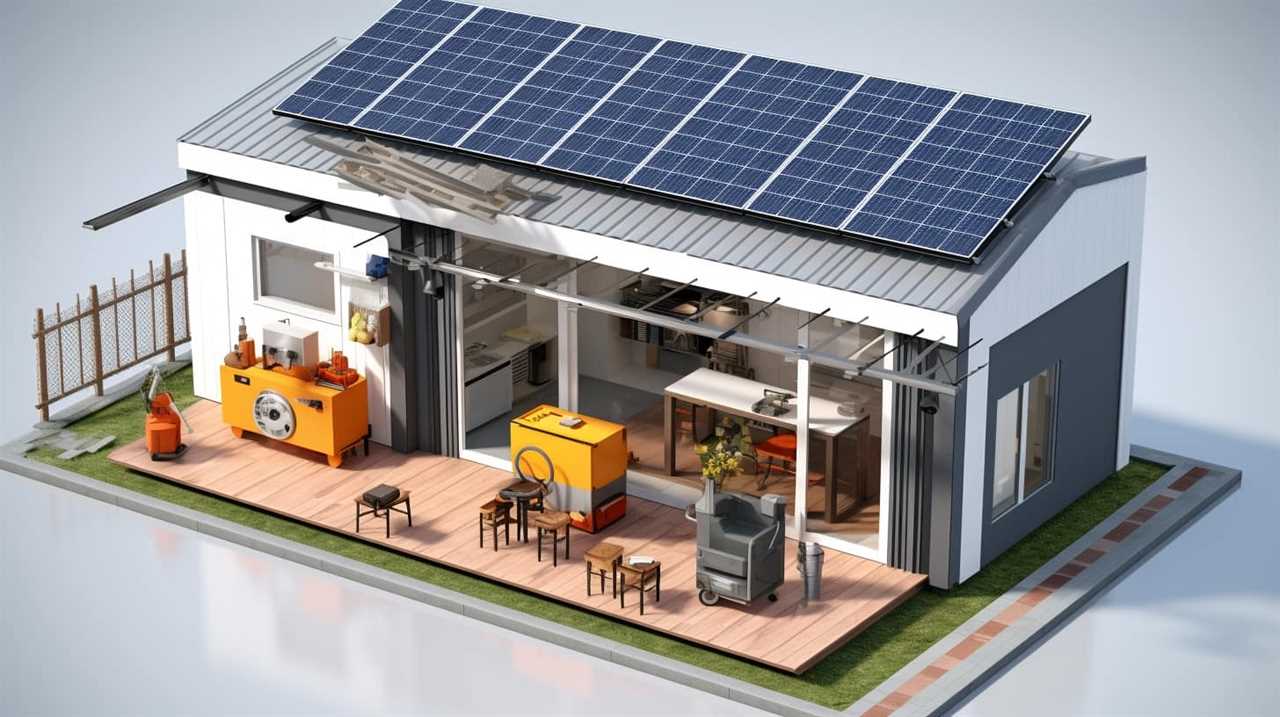
Aphids are small, pear-shaped insects that cluster on new leaves and buds.
Mealybugs are covered in a white, waxy substance and can be found on the undersides of leaves and in leaf axils.
Whiteflies, as the name suggests, are tiny white insects that fly around when disturbed.
An infestation of these tiny white bugs can cause significant damage to your house plants. Signs of infestation include yellowing leaves, stunted growth, distorted foliage, and a sticky residue called honeydew on the leaves. Furthermore, these pests can transmit plant diseases, weaken the plant’s immune system, and attract other pests.
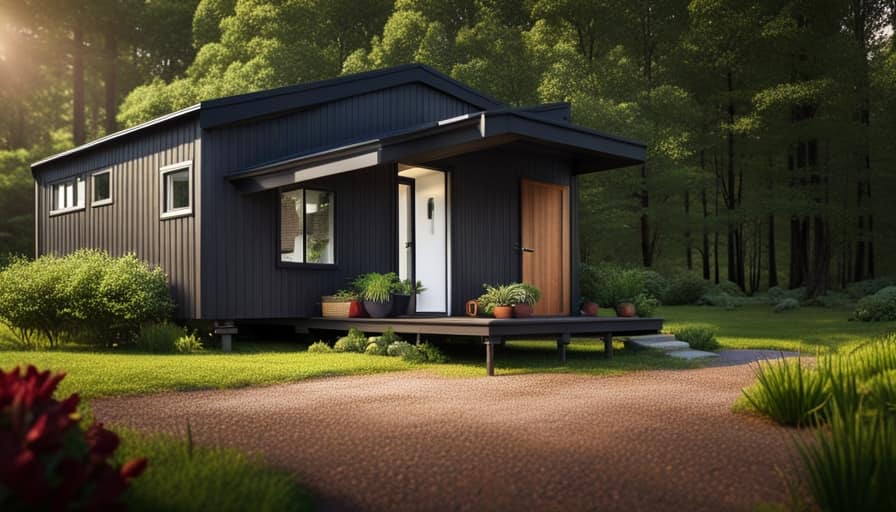
Understanding the causes of infestation is crucial in effectively getting rid of these tiny white bugs on your house plants.
Understanding the Causes of Infestation
Understanding the causes of infestation is essential in effectively eliminating these tiny white bugs on my house plants. Here are a few key factors to consider:
- Lack of proper plant care: Neglecting to provide adequate water, sunlight, and nutrients can weaken plants, making them more susceptible to bug infestations.
- Overwatering: Excessive moisture can create a favorable environment for pests like aphids and mealybugs.
- Bringing infested plants indoors: Introducing plants from outside without proper inspection can bring unwanted bugs into your home.
Recognizing the signs of bug damage is crucial for preventing infestation. Look out for yellowing, wilting leaves, sticky residue on leaves and stems, and tiny white bugs crawling on the plant’s surface.
Now that we understand the causes of infestation, let’s explore natural remedies to eliminate these pesky bugs.
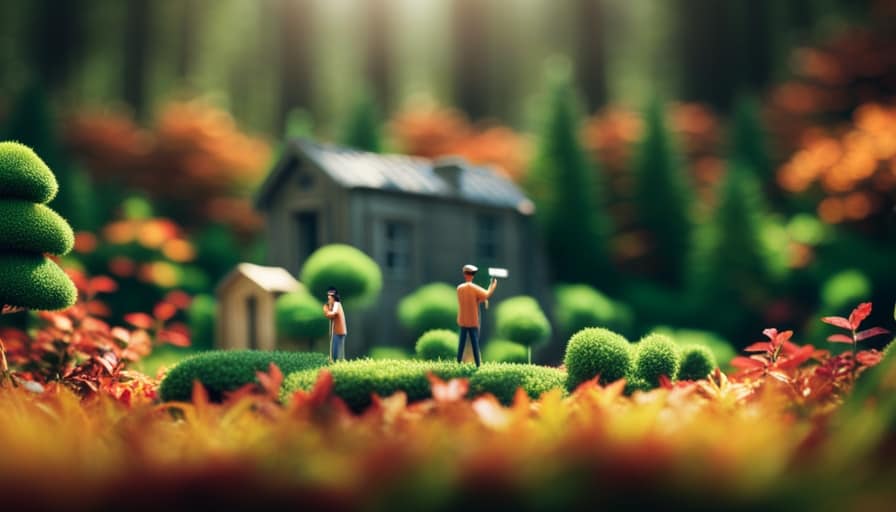
Natural Remedies to Eliminate the Bugs
To effectively get rid of these tiny white bugs on my house plants, I’ll need to rely on natural remedies that can eliminate them without harming the plants.
One effective option is to create homemade insecticides using ingredients readily available in your kitchen. You can mix a solution of water and dish soap, or water and neem oil, and spray it directly on the affected plants. These solutions work by suffocating the pests and disrupting their feeding patterns.
Another natural approach is to introduce insect-repelling plants into your garden. Plants like lavender, mint, and marigold emit fragrances that repel insects, keeping them away from your precious plants.
Chemical Solutions for a Lasting Bug-Free Environment
One effective chemical solution for achieving a bug-free environment is using a professional-grade insecticide spray. These sprays are specifically formulated to target and eliminate pests, including tiny white bugs on house plants. When using a professional-grade insecticide spray, it’s important to follow the instructions provided by the manufacturer to ensure safe and effective use.
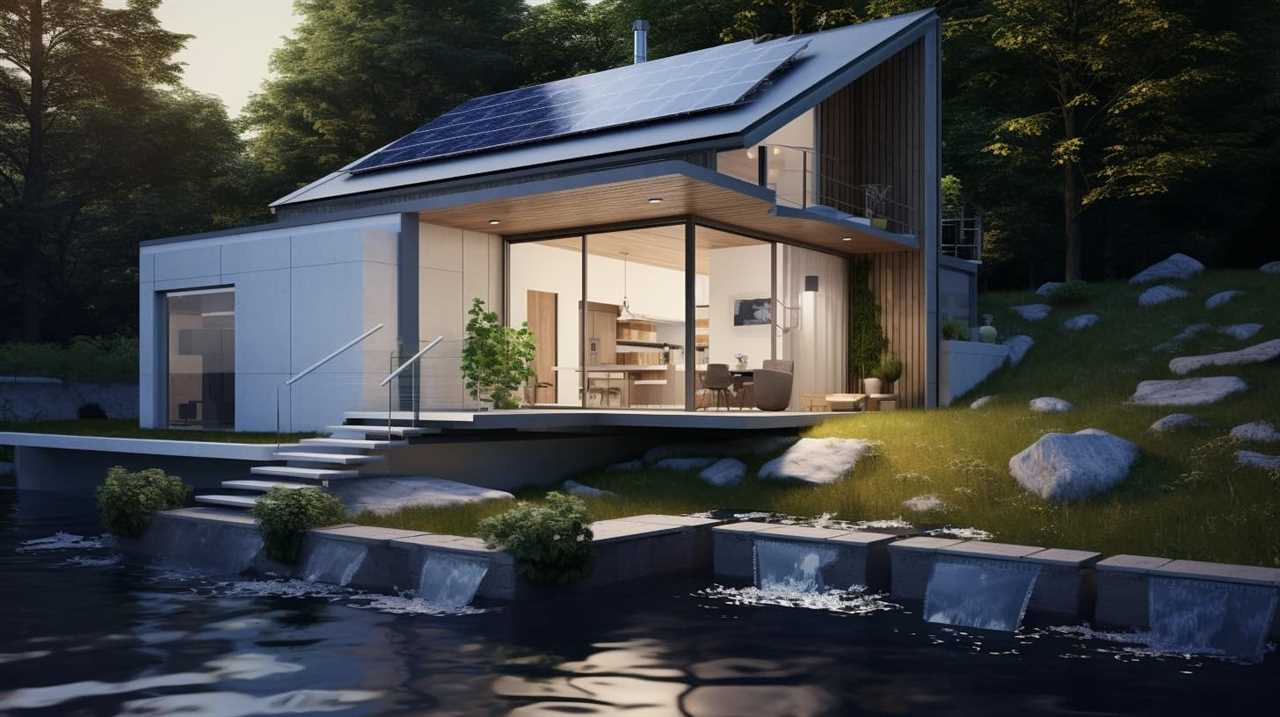
Additionally, consider these non-toxic alternatives to chemical solutions for pest control:
-
Neem oil: Derived from the neem tree, neem oil is a natural insecticide that can be effective against a wide range of pests. It works by disrupting the insect’s life cycle and repelling them from plants.
-
Insecticidal soap: Made from potassium salts of fatty acids, insecticidal soap works by suffocating pests on contact. It’s safe to use on most plants and can be an effective solution against white bugs.
-
Diatomaceous earth: This powdery substance is made from fossilized remains of diatoms and acts as a desiccant, drying out and killing insects.
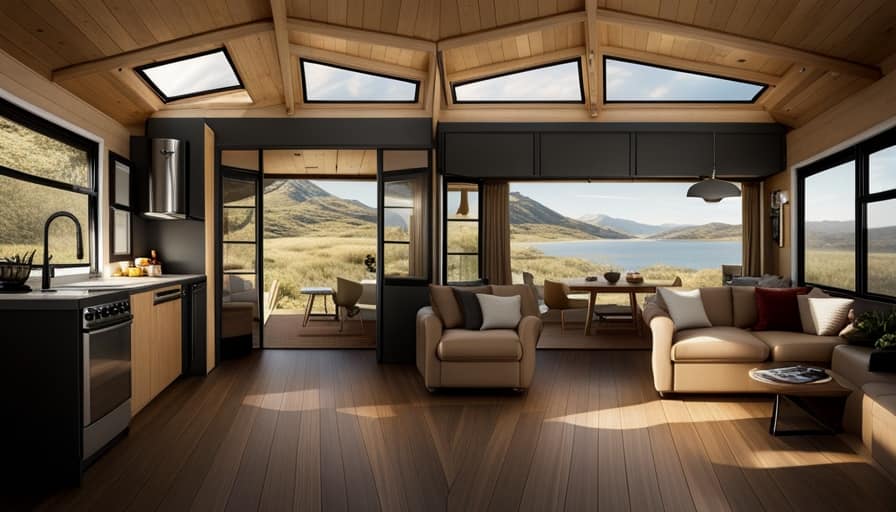
When using any chemical solution or non-toxic alternative, it’s essential to monitor the plants closely and repeat the treatment as necessary to maintain a bug-free environment. Professional pest control services can also provide expert guidance and assistance in achieving long-lasting results.
Preventing Future Infestations and Maintaining Healthy House Plants
To effectively prevent future infestations and maintain healthy house plants, I will implement a regular cleaning and inspection routine. This will help ensure that any signs of pests or diseases are detected early on and addressed promptly. Regularly cleaning the leaves and stems of my plants with a mild soap and water solution will help remove any dust or debris that can attract pests. Additionally, I will inspect the plants for any signs of infestation, such as white bugs or sticky residue on the leaves. To further enhance plant hygiene, I will also consider using beneficial insects, such as ladybugs or lacewings, which feed on common plant pests like aphids. By incorporating these practices into my routine, I can maintain healthy house plants and prevent future infestations.
| Regular Cleaning | Inspection Routine | Using Beneficial Insects |
| Remove dust and debris | Check for signs of infestation | Introduce ladybugs or lacewings to control pests |
| Promotes plant hygiene | Detect and address issues early | Natural pest control method |
| Prevents pest attraction | Maintain healthy house plants | Encourages ecosystem balance |
Frequently Asked Questions
Can These Tiny White Bugs Harm Humans?
Yes, tiny white bugs on house plants can harm humans. They can cause skin irritations and allergic reactions. It’s important to take steps to prevent infestations, such as regularly inspecting and cleaning your plants.
How Long Does It Take for Natural Remedies to Eliminate the Bugs Completely?
To completely eliminate the tiny white bugs using natural remedies, it typically takes a few weeks of consistent application. However, the effectiveness of these remedies can vary. It’s important to avoid common mistakes like under-applying or using incorrect remedies.
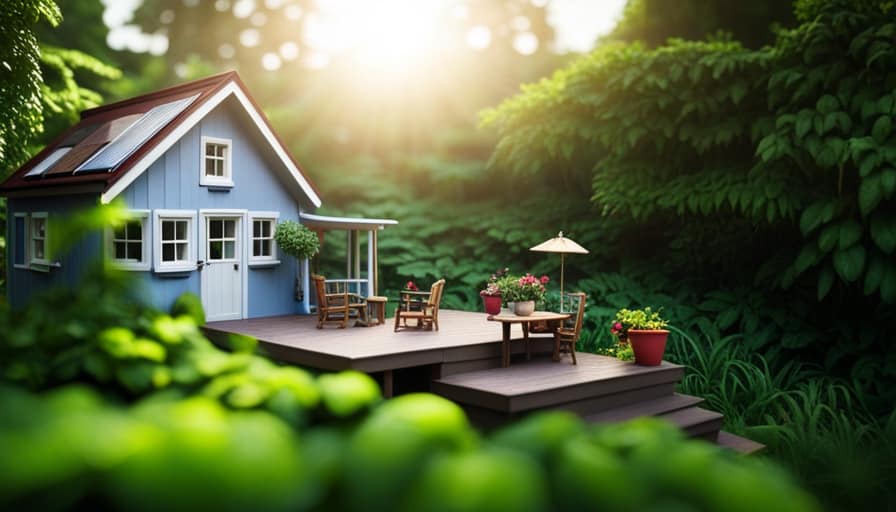
Are There Any Specific Types of House Plants That Are More Prone to Infestations?
Certain house plants, like lavender and marigolds, have natural repellent properties that can help prevent infestations. It’s important to choose plants that are known to repel bugs and to regularly inspect and clean your plants to avoid any potential infestations.
Can These Bugs Spread From One House Plant to Another?
Oh, the joy of tiny white bugs on house plants! Yes, these pests can spread from one plant to another. To control them, use insecticides and watch out for signs of infestation like sticky residue or wilting leaves.
How Often Should I Check My House Plants for Signs of Infestation?
I check my house plants for signs of infestation regularly to ensure their health. Common signs include tiny white bugs and yellowing leaves. Preventative measures like proper watering and cleaning can help keep plants bug-free.
Conclusion
In conclusion, taking care of our house plants goes beyond watering and sunlight. Identifying and eliminating tiny white bugs is a crucial part of maintaining a healthy environment for our plants.
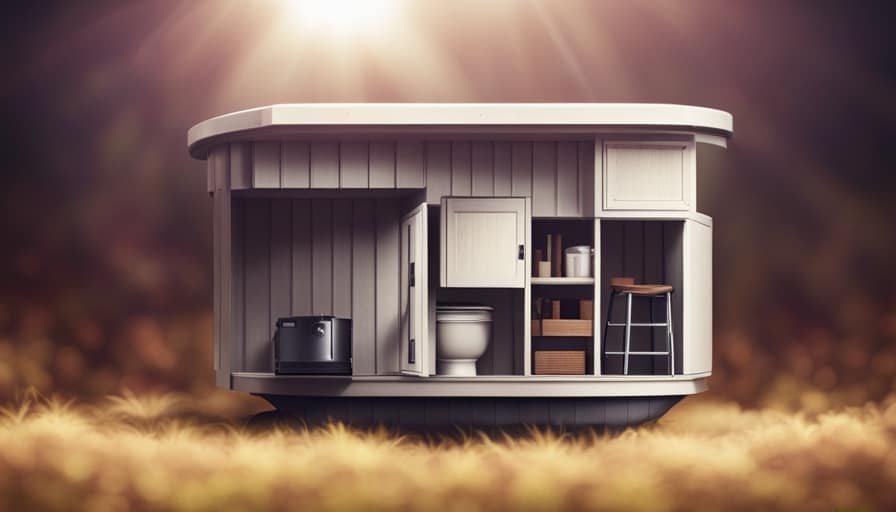
By understanding the causes of infestation and using natural or chemical remedies, we can ensure a bug-free environment. Remember, prevention is key, so regularly inspect your plants and take necessary measures to keep them thriving.
Happy gardening!
I’m Theodore, and I love tiny houses. In fact, I’m the author of Tiny House 43, a book about tiny houses that are also tree houses. I think they’re magical places where imaginations can run wild and adventures are just waiting to happen.
While tree houses are often associated with childhood, they can be the perfect adult retreat. They offer a cozy space to relax and unwind, surrounded by nature. And since they’re typically built on stilts or raised platforms, they offer stunning views that traditional homes simply can’t match.
If you’re looking for a unique and romantic getaway, a tree house tiny house might just be the perfect option.
Beginners Guides
How Do I Get Rid of Tiny Moths in My House

I have experienced the frustration of dealing with tiny moths flying around my food in the kitchen. But do not worry, I have a solution for you.
In this article, I’ll show you how to banish those pesky moths from your house for good. We’ll dive into identifying different moth species, understanding what attracts them, and simple prevention techniques you can implement.
Plus, I’ll share some natural remedies and professional options as a last resort. Say goodbye to those unwanted guests!
Key Takeaways
- Identifying the specific moth species is crucial for implementing targeted control measures.
- Moths are attracted to food sources, fabrics, and organic materials, so it’s important to store food in airtight containers and keep the house clean.
- Moths prefer dark, undisturbed areas to lay their eggs, so sealing cracks and openings in walls, windows, and doors can help prevent infestation.
- If natural remedies and DIY methods fail, it is advisable to seek professional pest control services for thorough inspection and tailored treatment plans.
Identifying the Culprits: What Type of Moth Is Invading Your Home
I can’t figure out what kind of moth is infesting my home. It’s frustrating not knowing the exact species, as different moths have different behaviors and habits. Identifying the culprits is crucial in order to effectively address the problem.
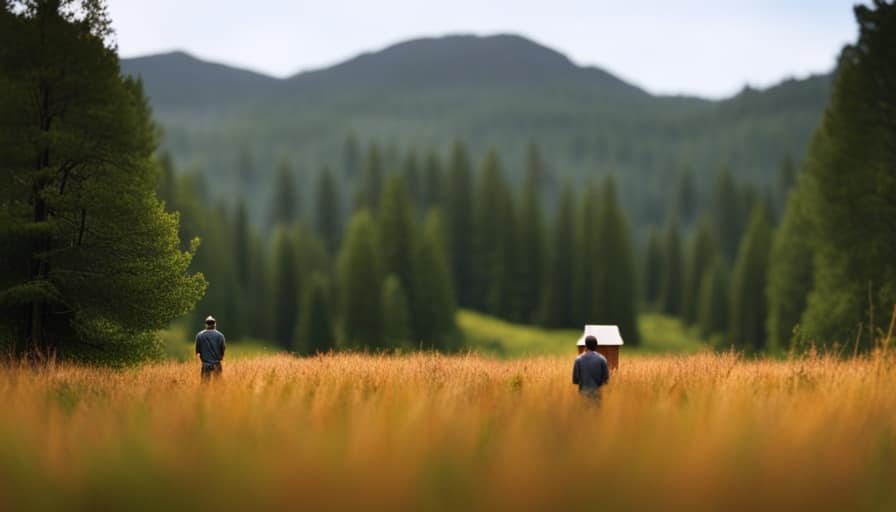
There are several common moth species that are known to invade homes, such as the Indian mealmoth, clothes moth, and pantry moth. Each species has distinct characteristics that can help with identification. Understanding their behavior is also important as it can give insights into their lifecycle and potential sources of infestation.
Moths are attracted to food sources, fabrics, and other organic materials. They can lay eggs in stored grains, textiles, or even pet food. By understanding the specific species and their behavior, it becomes easier to implement targeted control measures and prevent further infestations.
Understanding the Infestation: Why Are Moths Attracted to Your House
To effectively address the infestation, it’s essential to understand why moths are attracted to your house. Here are four reasons why moths may be flocking to your home:
-
Food sources: Moths are attracted to food, especially grains, cereals, and dried fruits. They can easily find their way into your pantry and feast on these items.
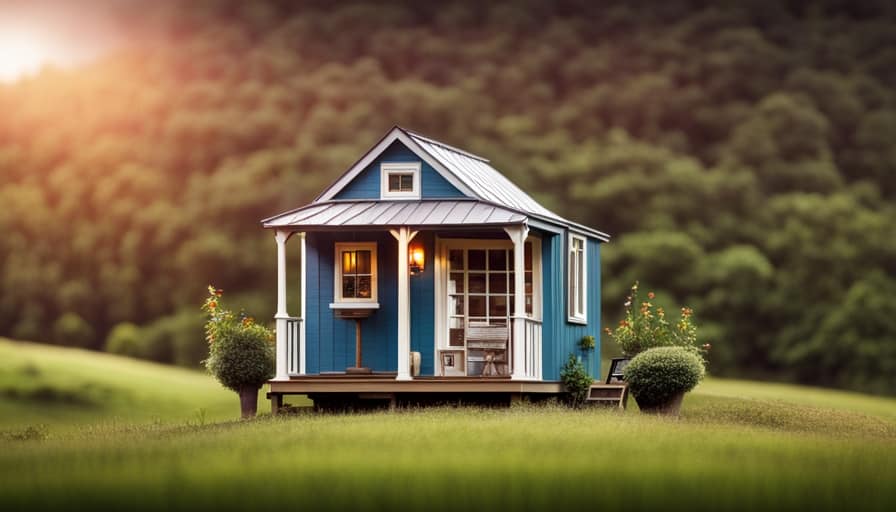
-
Moisture and humidity: Moths thrive in damp environments, making your house an ideal breeding ground if there are areas with high humidity or water leaks.
-
Suitable habitat: Moths are drawn to dark, undisturbed areas where they can lay their eggs undisturbed. This includes closets, attics, and basements.
-
Outdoor attraction: Moths can be attracted to your house from the outside, especially if you have outdoor lights that are left on at night.
Understanding moth behavior and their attraction to your house is crucial in preventing further infestation. By addressing these factors, you can take steps to keep moths at bay and protect your home.

Here are some moth prevention tips:
- Store food in airtight containers.
- Keep your house clean and free of crumbs or spills.
- Fix any leaks or moisture issues promptly.
- Use moth repellents or traps in vulnerable areas.
Prevention Is Key: Simple Steps to Keep Moths From Entering Your Home
Prevention is essential, so I’ll share some simple steps to keep moths from entering your home. By taking a proactive approach, you can create an inhospitable environment for moths and minimize the risk of infestations. One effective method is to use moth repellent products, such as sachets or sprays, in areas where moths are commonly found. These repellents contain chemicals that deter moths from entering your home. Additionally, it is crucial to seal any cracks or openings in your walls, windows, and doors. Moths can easily slip through these tiny gaps, so using caulk or weatherstripping can help keep them out. Regularly vacuuming and cleaning your home can also eliminate moth eggs or larvae that may be hiding in carpets or corners. By implementing these preventive measures, you can ensure a moth-free home environment.
| Steps to Keep Moths Away | |
|---|---|
| Use moth repellent products | Seal cracks and openings |
| Regularly vacuum and clean |
Natural Remedies: Non-Toxic Solutions to Get Rid of Moths
One effective way to get rid of moths naturally is by using a combination of vinegar and water to create a non-toxic moth spray. Here are some natural remedies you can try:
-
Vinegar and water spray: Mix equal parts vinegar and water in a spray bottle. Spray this solution on areas where moths are present, such as closets, drawers, and pantry shelves. The strong odor of vinegar repels moths and prevents them from laying eggs.
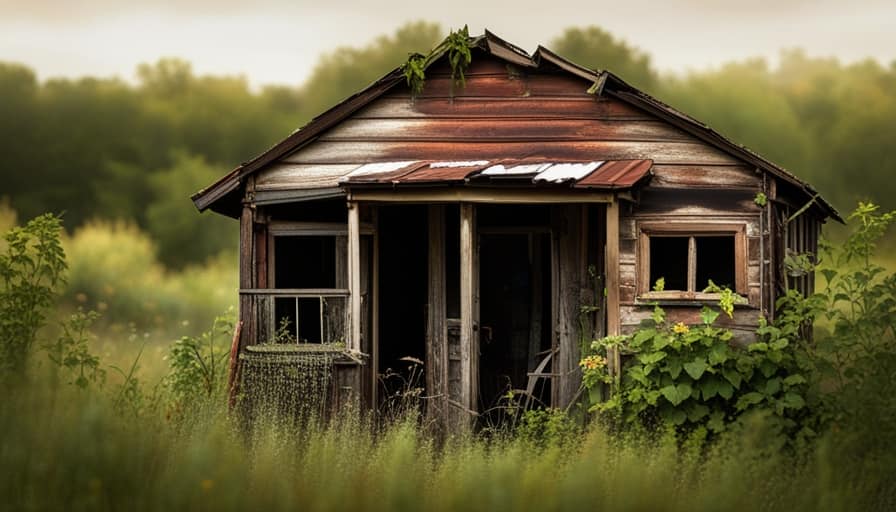
-
Cedar chips: Moths dislike the smell of cedar, so placing cedar chips in your closets and drawers can help deter them. You can also use cedar oil or cedar sachets for the same effect.
-
Homemade traps: Create simple moth traps by placing a mixture of vinegar, sugar, and dish soap in a bowl. The sweet scent attracts moths, and the dish soap traps them when they try to land on the mixture.
-
Lavender sachets: Moths are repelled by the fragrance of lavender. Place dried lavender in small sachets and tuck them in your clothing drawers or hang them in your closets.
These natural repellents and homemade traps can help you get rid of moths without using toxic chemicals. However, if these methods fail to eliminate the infestation, it may be time to consider professional pest control options.
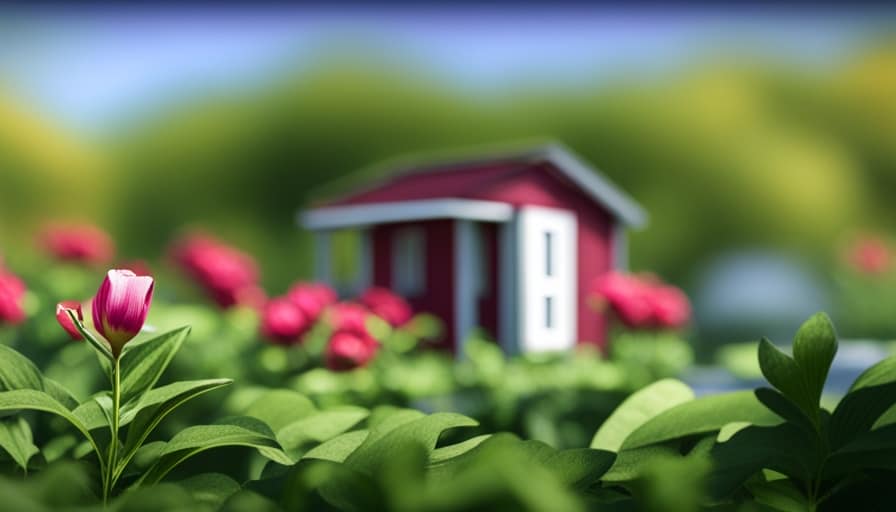
Last Resort: When All Else Fails, Professional Pest Control Options
If I’ve exhausted all other options, I’ll contact a professional pest control service to eliminate the moth infestation in my house. While natural remedies and DIY methods can be effective for small infestations, sometimes the problem persists or worsens despite our best efforts.
This is when it’s crucial to call in the experts. Professional pest control services have the knowledge, experience, and resources to effectively eradicate moth infestations. They’ll conduct a thorough inspection of your home to identify the source of the infestation and develop a tailored treatment plan.
The benefits of hiring professionals include their expertise in identifying different moth species, their access to specialized equipment and pesticides, and their ability to ensure the complete eradication of the infestation.
When all else fails, it’s best to rely on the expertise of professional pest control services to rid your home of those persistent moths.

Frequently Asked Questions
Can Moths Cause Any Damage to My House or Belongings?
Moths can cause damage to fabrics, carpets, and stored food. It’s important to address a moth infestation promptly. Using natural moth repellents, like lavender or cedar, can help deter them from your house and protect your belongings.
Are All Types of Moths Attracted to Homes, or Are There Specific Species That Are More Common?
In the world of moths, certain species have a penchant for our cozy homes. Understanding the types commonly found indoors can help us prevent the dreaded infestations from taking hold in the first place.
How Long Does It Usually Take to Get Rid of a Moth Infestation Using Natural Remedies?
Using natural remedies to get rid of a moth infestation can be effective, but the time it takes varies depending on the severity. Common signs of an infestation include sightings of adult moths and larvae, as well as damaged fabrics or food products.
Can Moths Carry Diseases or Pose a Health Risk to Humans?
Moths can transmit diseases to humans, so it’s important to take precautions. Individuals with allergies or asthma may experience respiratory issues due to moth infestations in homes.

Are There Any Specific Plants or Herbs That Repel Moths and Can Be Used as Natural Remedies?
Using natural moth repellents, such as specific plants and herbs, offers several benefits over chemical alternatives. Creating a moth repelling garden with lavender, rosemary, and mint can effectively deter moths from your house.
Conclusion
In conclusion, it’s essential to address the presence of these minuscule pests in your home promptly. By identifying the specific type of moth invading your space and understanding their attraction, you can take preventive measures to keep them at bay.
Utilizing natural remedies and seeking professional pest control services as a last resort will ensure a moth-free environment without compromising your household’s well-being.
Stay vigilant and employ these effective methods to bid farewell to these unwelcome visitors.
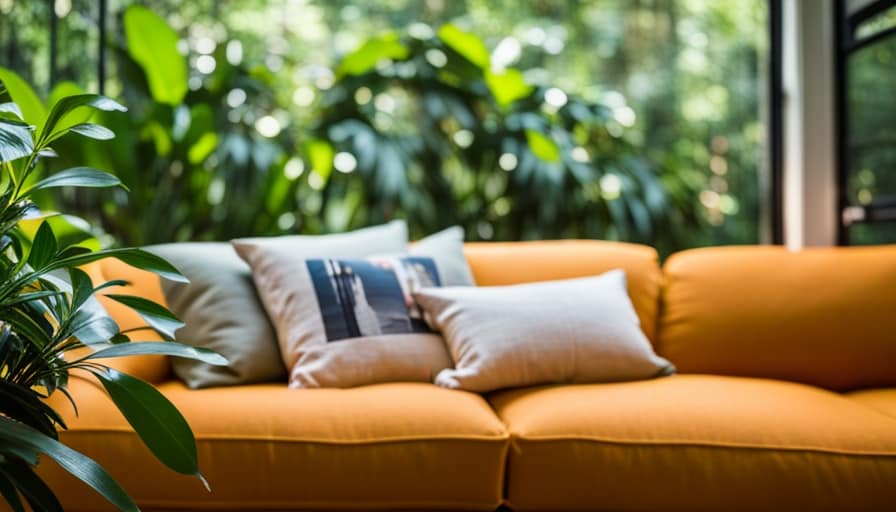
I’m Theodore, and I love tiny houses. In fact, I’m the author of Tiny House 43, a book about tiny houses that are also tree houses. I think they’re magical places where imaginations can run wild and adventures are just waiting to happen.
While tree houses are often associated with childhood, they can be the perfect adult retreat. They offer a cozy space to relax and unwind, surrounded by nature. And since they’re typically built on stilts or raised platforms, they offer stunning views that traditional homes simply can’t match.
If you’re looking for a unique and romantic getaway, a tree house tiny house might just be the perfect option.
Beginners Guides
How Difficult Is It to Build a Tiny House in Colorado Springs

I understand your concerns about building a tiny house in Colorado Springs. However, I can assure you that with the proper knowledge and guidance, it is completely achievable.
In this article, I’ll walk you through the zoning regulations, permitting process, finding suitable land, and navigating building codes. We’ll also discuss securing financing, budgeting, and dealing with utilities.
So, if you’re ready to embark on this rewarding journey, let’s dive in and make your tiny house dreams a reality.
Key Takeaways
- Zoning regulations and building permits are required for constructing a tiny house in Colorado Springs.
- Finding suitable land that complies with zoning regulations is important for placing a tiny house.
- Familiarizing oneself with local building codes and regulations, and following safety guidelines is necessary.
- Researching various financing options and presenting a detailed budget can increase the chances of securing financing for building a tiny house.
Zoning Regulations and Permitting Process
I’ll need to research the zoning regulations and permitting process before starting to build my tiny house in Colorado Springs. Understanding these regulations is crucial as they dictate where and how I can construct my tiny house.
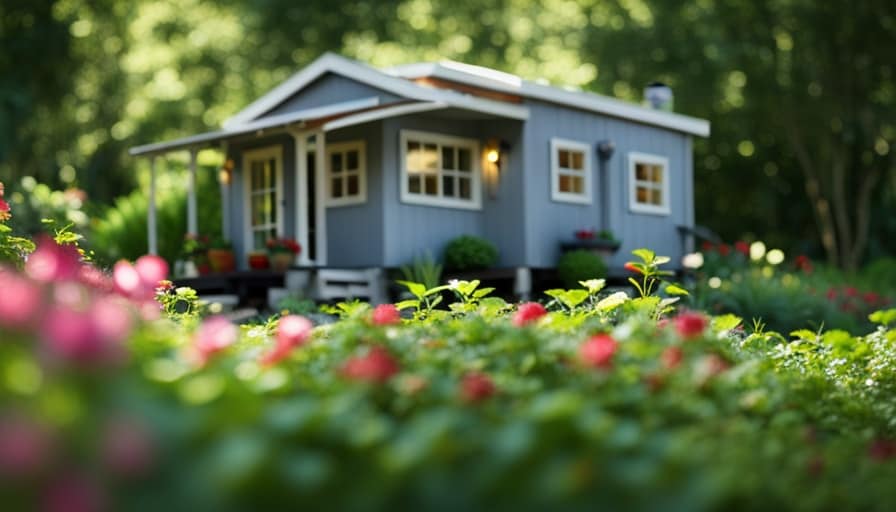
One key aspect to consider is the impact of tiny houses on property values. While some argue that they can decrease property values, others believe that they can actually increase them by adding diversity and uniqueness to the community.
Additionally, one of the challenges I may face is finding legal parking for my tiny house in urban areas. Many cities have restrictions on where tiny houses can be parked, making it essential to find suitable parking options that comply with local regulations.
With these factors in mind, I can now move on to finding suitable land for my tiny house.
Finding Suitable Land for Your Tiny House
After researching the zoning regulations and permitting process, it’s now time to start finding suitable land for my tiny house in Colorado Springs.
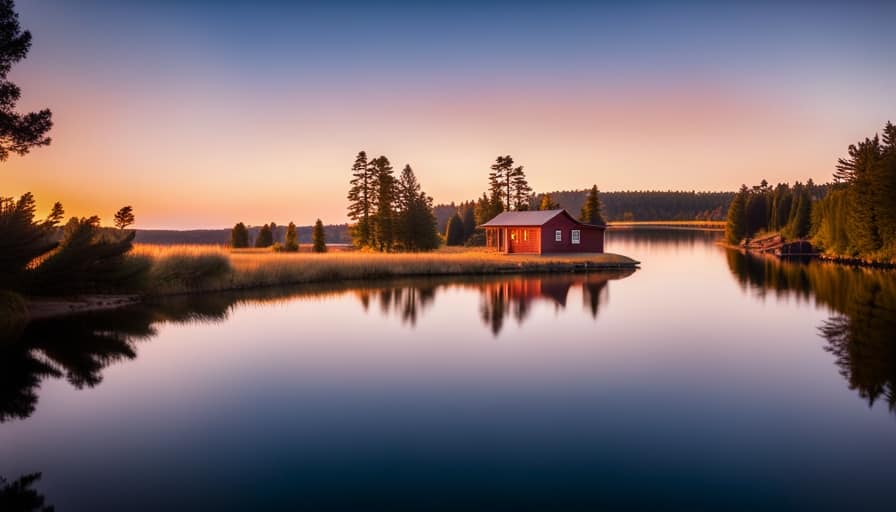
When it comes to finding land for a tiny house, there are a few important factors to consider. One of the major challenges is land availability constraints. Due to the increasing popularity of tiny houses, finding land that allows for their construction can be difficult. It’s important to do thorough research and explore different options, such as contacting local real estate agents or checking online platforms that specialize in tiny house-friendly land.
Additionally, environmental impact considerations are crucial. It’s important to choose a location that minimizes the impact on the surrounding environment and aligns with sustainable practices.
Taking these factors into account will ensure that I find a suitable piece of land for my tiny house in Colorado Springs.
Navigating Building Codes and Inspections
When it comes to navigating building codes and inspections for my tiny house in Colorado Springs, I’ll need to familiarize myself with the local regulations and ensure compliance throughout the construction process. Understanding local regulations is crucial to avoid any legal issues and ensure that my tiny house meets all the necessary requirements.
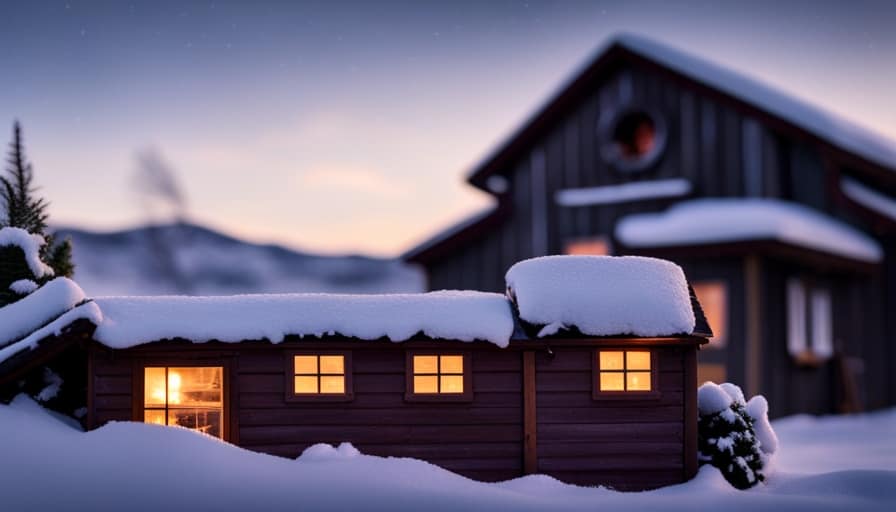
This includes obtaining proper permits, adhering to zoning laws, and following safety guidelines. To ensure a smooth process, I may consider hiring a professional builder who’s well-versed in local building codes and has experience with tiny house construction. Their expertise and knowledge will help me navigate the intricacies of the regulations and ensure that my tiny house is built according to the highest standards.
By understanding the local regulations and working with a professional builder, I can confidently proceed with my project while complying with all necessary codes and inspections.
With the building codes and inspections in mind, the next step is to secure financing and budget for my tiny house project.
Securing Financing and Budgeting for Your Project
To successfully secure financing and budget for my tiny house project in Colorado Springs, I frequently need to research various lenders and explore different funding options. Securing loans for a tiny house can be challenging, as it’s a unique type of project and not all lenders may be familiar with it. However, there are lenders who specialize in providing loans specifically for tiny houses.
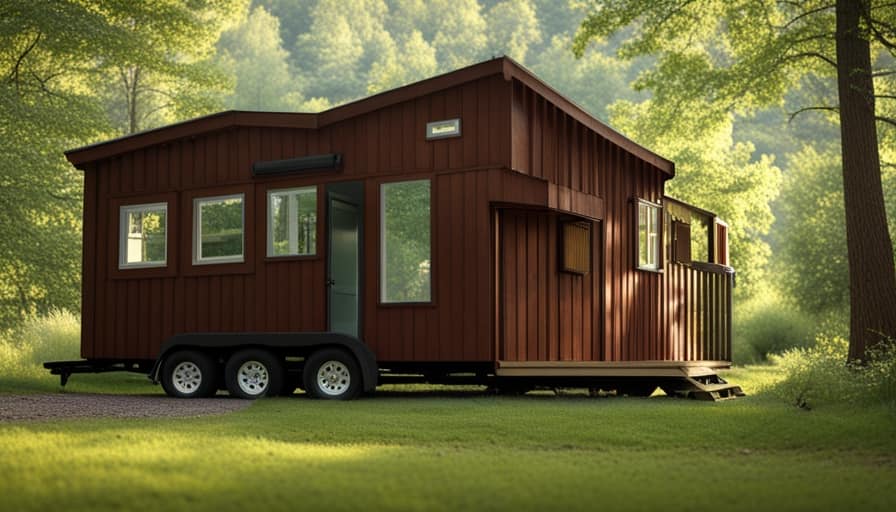
It’s important to gather all the necessary documents and information required by the lenders, such as the cost estimation of the project, including materials, labor, and any additional expenses. By presenting a thorough and well-prepared budget, it increases the chances of securing financing for the project.
Once the financing is secured, it becomes easier to move forward with the next steps of the project, such as dealing with utilities and exploring off-grid options.
Dealing With Utilities and Off-Grid Options
I can explore both traditional utility options and off-grid alternatives when dealing with electricity, water, and sewage in my tiny house in Colorado Springs.
When it comes to off-grid power, there are several options available. Solar panels are a popular choice, harnessing the energy of the sun to generate electricity. Wind turbines can also be used to generate power, particularly in areas with consistent wind patterns. Additionally, hydroelectric power can be harnessed if there’s a suitable water source nearby.
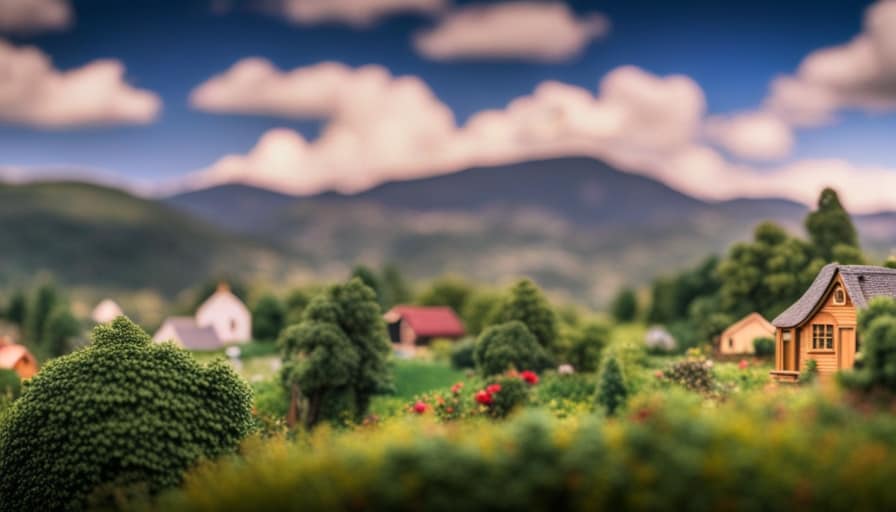
As for water sources, rainwater collection systems can be installed to capture and store rainwater for household use. Digging a well is another option, although it may require permits and additional expenses.
Lastly, composting toilets can be used to manage sewage in an off-grid tiny house, eliminating the need for traditional plumbing systems.
Frequently Asked Questions
What Are the Advantages of Building a Tiny House in Colorado Springs Compared to Other Cities in Colorado?
Building a tiny house in Colorado Springs has many advantages compared to other cities in Colorado. The city has a thriving tiny house community, supportive regulations, and an abundance of natural beauty to enjoy.
Are There Any Specific Design Requirements for Tiny Houses in Colorado Springs?
There are specific design requirements for tiny houses in Colorado Springs, including building regulations that must be followed. It is important to be knowledgeable about these requirements to ensure a successful and compliant build.

How Long Does the Zoning and Permitting Process Usually Take in Colorado Springs?
The zoning and permitting process in Colorado Springs can be a challenge. It takes time to navigate through the requirements and obtain the necessary approvals. However, with proper guidance and patience, it is possible to build a tiny house in Colorado Springs.
Are There Any Restrictions on Living in a Tiny House on Wheels in Colorado Springs?
Living in a tiny house on wheels in Colorado Springs comes with restrictions. Tiny house parking options are limited, and building codes for tiny houses must be followed. It can be challenging, but not impossible.
Can I Rent Out My Tiny House as an Airbnb in Colorado Springs?
Renting out a tiny house as an Airbnb in Colorado Springs is possible, but there are regulations to follow. It’s important to familiarize yourself with local zoning laws and obtain any necessary permits before listing your tiny house as a rental property.
Conclusion
Building a tiny house in Colorado Springs may be challenging due to zoning regulations, finding suitable land, navigating building codes, securing financing, and dealing with utilities.
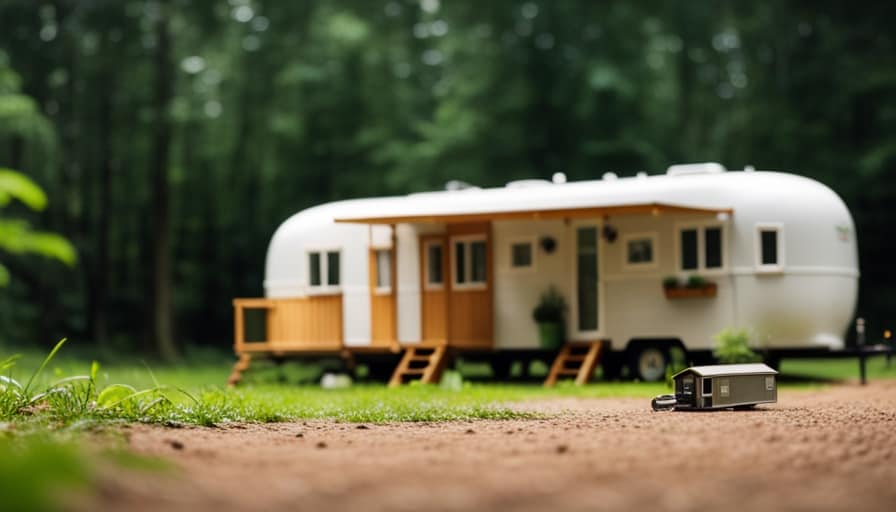
However, with determination and thorough research, it’s possible to overcome these obstacles.
For example, Sarah, a Colorado Springs resident, successfully built her own off-grid tiny house by carefully selecting land outside city limits, obtaining the necessary permits, and utilizing solar power.
Her experience demonstrates that with proper planning and knowledge, building a tiny house in Colorado Springs can be a rewarding and sustainable endeavor.
I’m Theodore, and I love tiny houses. In fact, I’m the author of Tiny House 43, a book about tiny houses that are also tree houses. I think they’re magical places where imaginations can run wild and adventures are just waiting to happen.
While tree houses are often associated with childhood, they can be the perfect adult retreat. They offer a cozy space to relax and unwind, surrounded by nature. And since they’re typically built on stilts or raised platforms, they offer stunning views that traditional homes simply can’t match.
If you’re looking for a unique and romantic getaway, a tree house tiny house might just be the perfect option.
-

 Beginners Guides2 weeks ago
Beginners Guides2 weeks agoHow To Buy A Tesla Tiny House
-

 Energy Efficiency2 months ago
Energy Efficiency2 months agoBest Tiny Homes For Cold Climates
-

 Beginners Guides1 week ago
Beginners Guides1 week agoTiny House Nation Where Are They Now Stephanie
-

 Tiny House Resources (e.g., legalities, cost, insurance, FAQs)2 months ago
Tiny House Resources (e.g., legalities, cost, insurance, FAQs)2 months agoDo Tiny Homes Need Planning Permission?
-

 Beginners Guides3 weeks ago
Beginners Guides3 weeks agoFrom The Show Tiny House Nation How Many Keep Their Tiny House?
-

 Beginners Guides2 months ago
Beginners Guides2 months agoUsing a Climbing Net For Treehouse Construction
-

 Beginners Guides2 months ago
Beginners Guides2 months agoHow to Build a Treehouse Without Drilling Into the Tree
-

 Beginners Guides3 weeks ago
Beginners Guides3 weeks agoTiny House Nation Who Pays For The Houses








